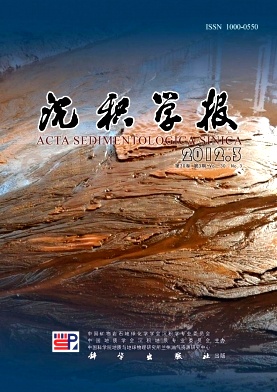Research on the Eastern Depositional System in Early Miocene, Baiyun Sag, Northern South China Sea
- Publish Date: 2012-06-10
-
Key words:
- /
- Baiyun Sag /
- Dongsha Uplift /
- provenance /
- sedimentary model /
- /
Abstract: Based on a large amount of drill, core and seismic data from the eastern Baiyun Sag, by the analysis of seismic attributes, seismic facices as well as drilling sedimentary facies, it is proved that in Baiyun Sag there is not only the north provenance but also the eastern depositional system which is derived from the Dongsha Uplift in early Miocene, and this discovery will lead to the expansion of the exploration scope for the deepwater clastic deposits of Baiyun Sag.The Eastern Depositional System is mainly developed in SQ23.8, with the bottom boundary SB23.8. Previous studies reported that the “Baiyun Movement” occurred in 23.8 Ma B.P. results in tremendous changes of Baiyun sag, causing the thermal subsidence of the sag, making the shelf neritic environment transform into slope deepwater environment, and SB23.8 is the interface of the shelf break belt migrating from the south of Baiyun sag to north. In 23.8 Ma B.P. the relative sea level fell to the lowest, which made the Panyu Low Uplift in the north and the Dongsha Uplift in the east be in a state of exposure. The formers' study has confirmed that the Panyu Low Uplift provides debris for the deep water of Baiyun sag, and then, whether the Dongsha Uplift which was also exposed in SQ23.8 can serve as the provenance for Baiyun sag is the breakthrough point of this paper.The erosion area of Dongsha uplift during early Miocene is about 20 000 km2, which is close to Baiyun sag, and considering such a great erosion area the uplift should provide materials for Baiyun sag. Besides, on the image of 3D seismic RMS amplitude slices present an abnormally high amplitude in the east of Baiyun sag, and the graph of sandstone/strata contour of SQ23.8 also presents high values in the east. In addition, on seismic, a wedgeshaped progradational reflection configuration with the direction from Dongsha Uplift to Baiyun sag in SQ23.8 is developed. Therefore, according to the above analysis, it is concluded that the Dongsha Uplift is one of the provenances of Baiyun sag during the period of SQ23.8 deposition.On seismic, the deposits characterized by wedgeshaped progradational reflection configuration are interpreted as the deposits of deltas for their developed location, and the deposits in front characterized by highamplitude, good continuity, progradational reflection on the trend seismic profile, a hummocky bidirectional progradation configuration on the cross profile, are interpreted as the submarine fan. Through observation of the core it is found that the carbonate content is fairly high in the core of SQ23.8, indicating that the sediments come from Dongsha Uplift, because during the period of SQ23.8 deposition,only Dongsha Uplift developed carbonate, also, again confriming the viewpoint that Dongsha Uplift is the provenance of Baiyun sag. Besides, a variety of gravity flow sedimentary structures are found in the core, such as normal graded bedding, Bouma sequence and slumpdeformation bedding and so on, indicating a kind of gravity flow deposits in bathyal environment.The sediments of the core are identified as submarine fan deposits.Based on the sequence division result by integrating well and seismic data, SQ23.8 can be divided into three system tracts: LST, TST and HST. Combining the sequence stratigraphic analysis and the study of the sedimentary facies, the sedimentary and evolution model of the eastern sedimentary system has been established. In this depositional system, the lowstand system tracts (LST) are represented by submarine fans, and the trangressive system tracts (TST) are dominated by the mixed deposits of clastic and carbonate rock, while in the highstand system tracts (HST) the deltaic deposits are well developed. The deposits and sedimentary model are mainly controlled by the change of relative sea level and material supply.
| Citation: | Research on the Eastern Depositional System in Early Miocene, Baiyun Sag, Northern South China Sea[J]. Acta Sedimentologica Sinica, 2012, 30(3): 461-468. |






 DownLoad:
DownLoad: